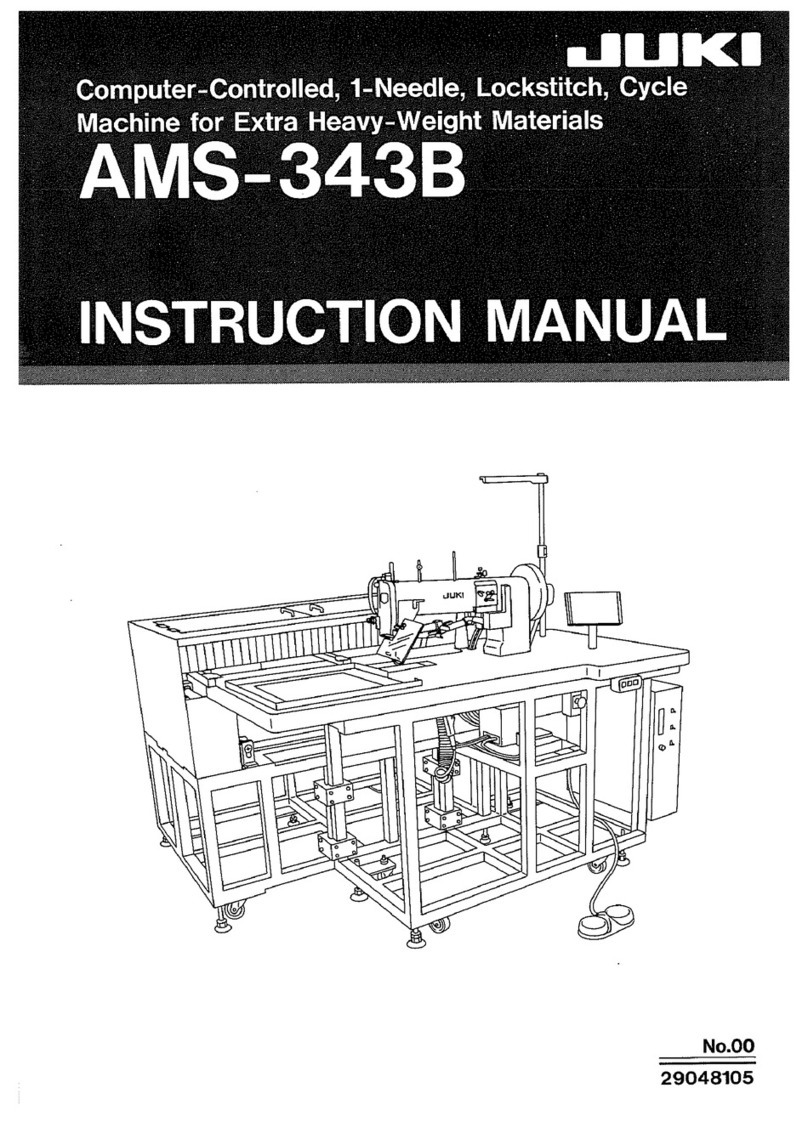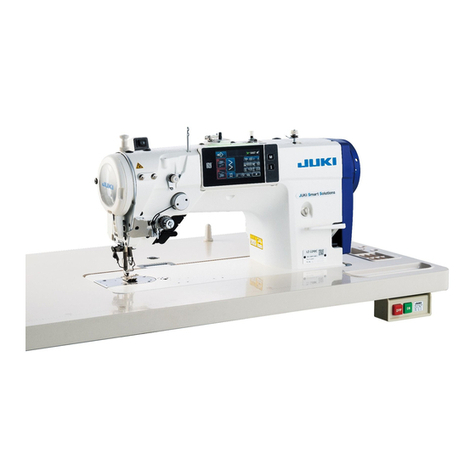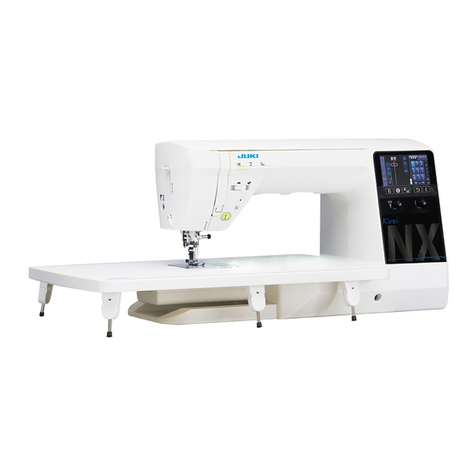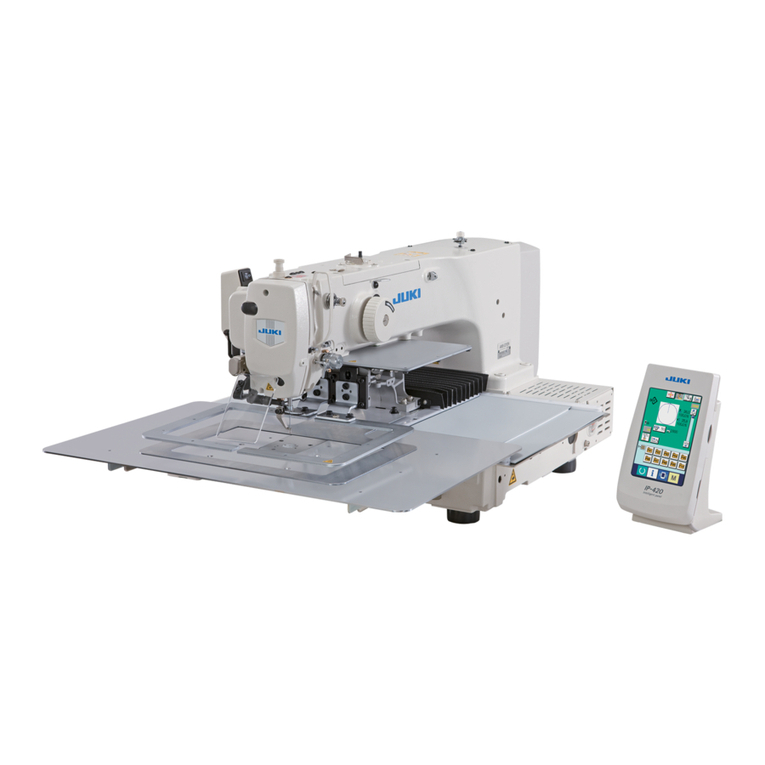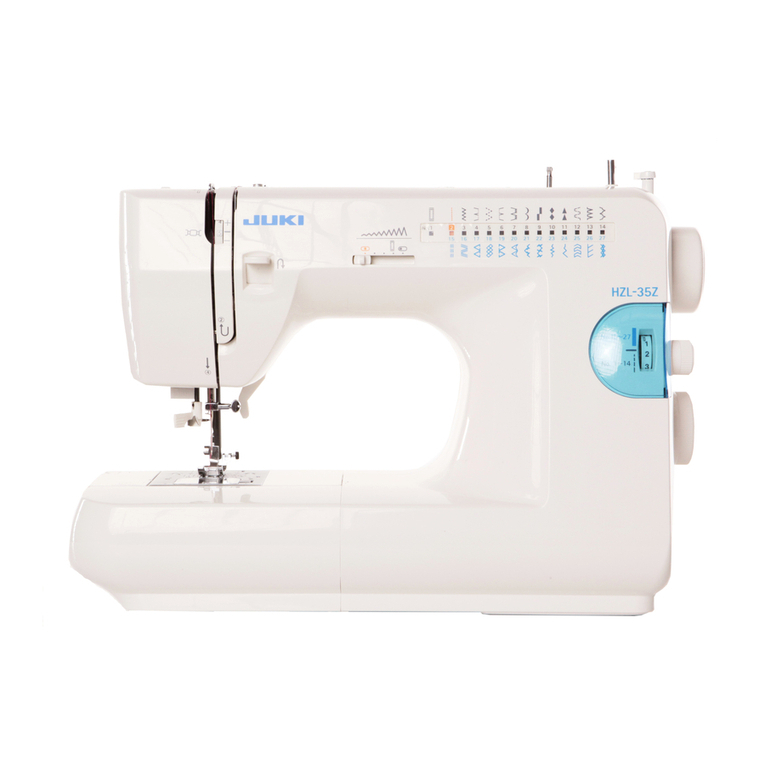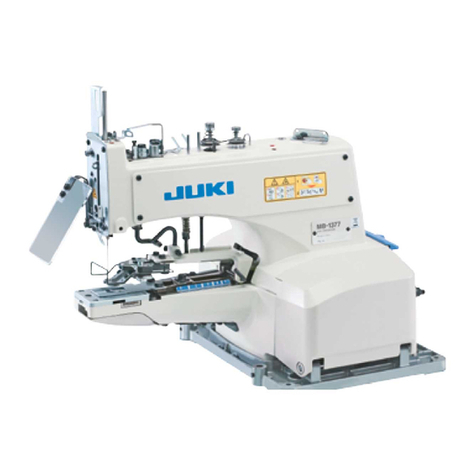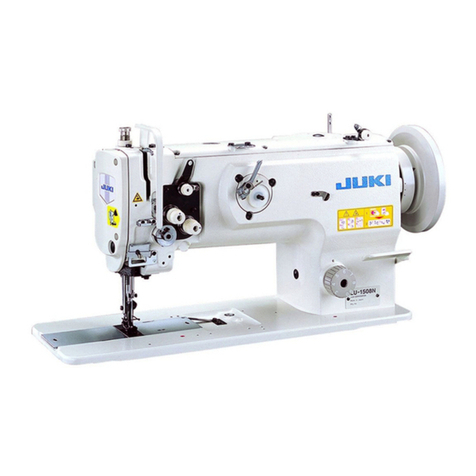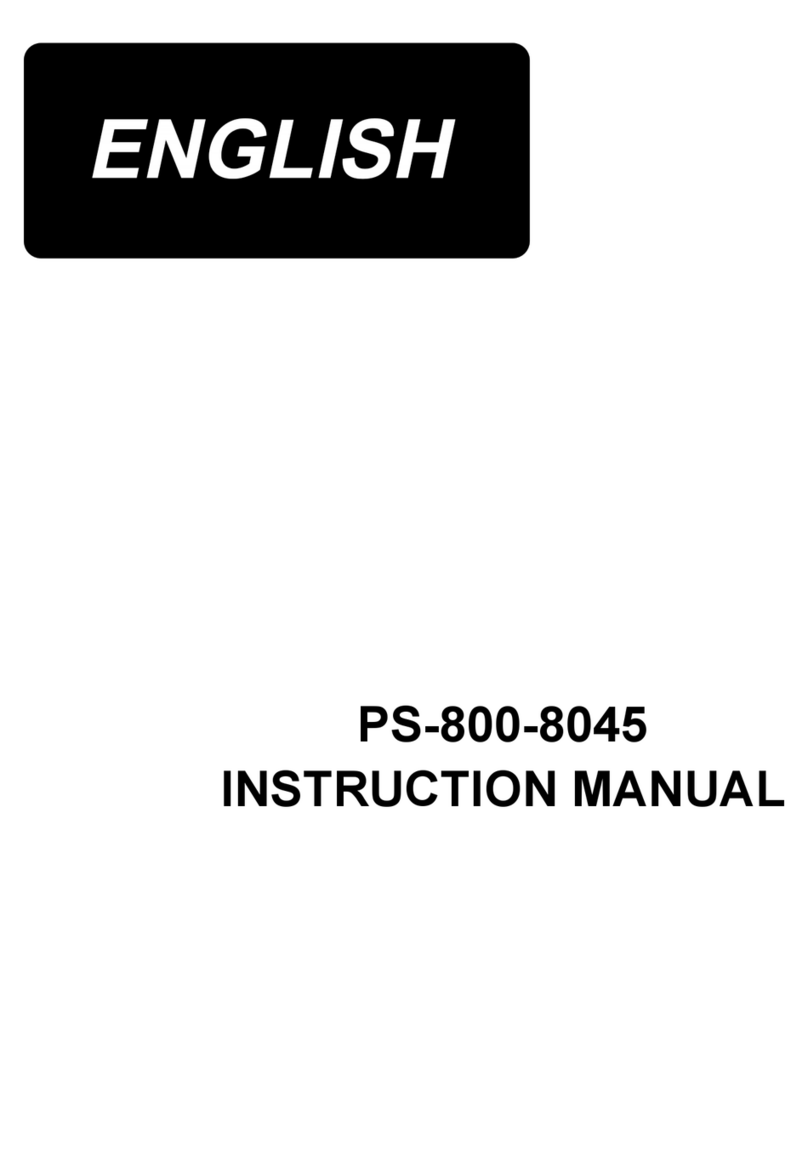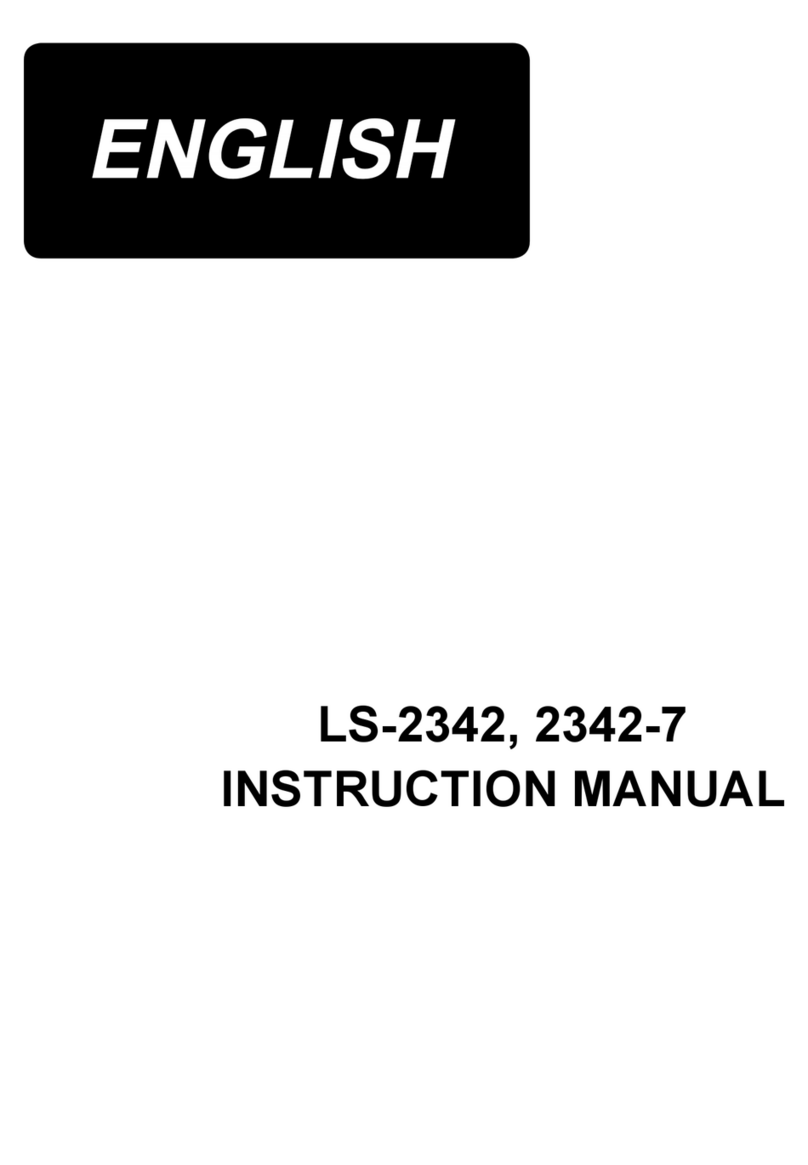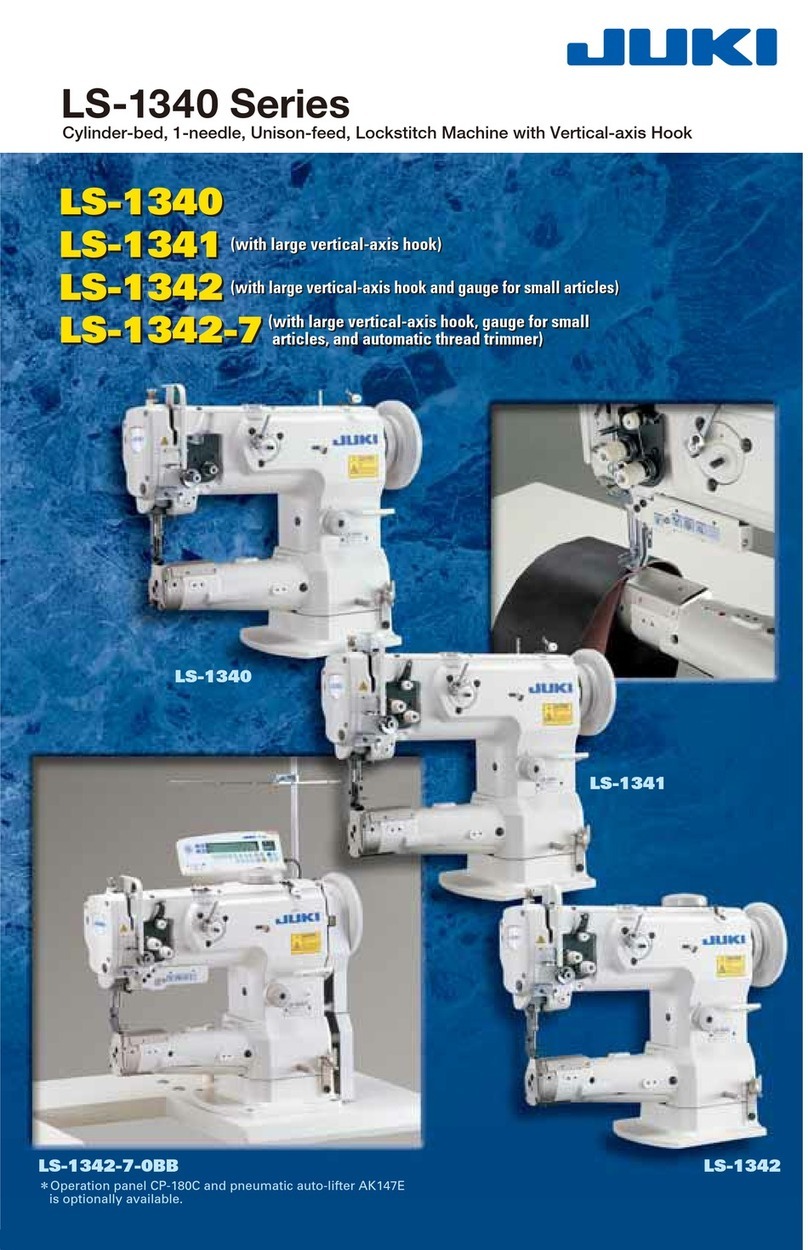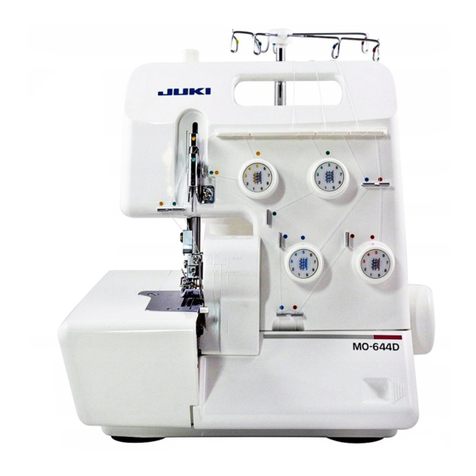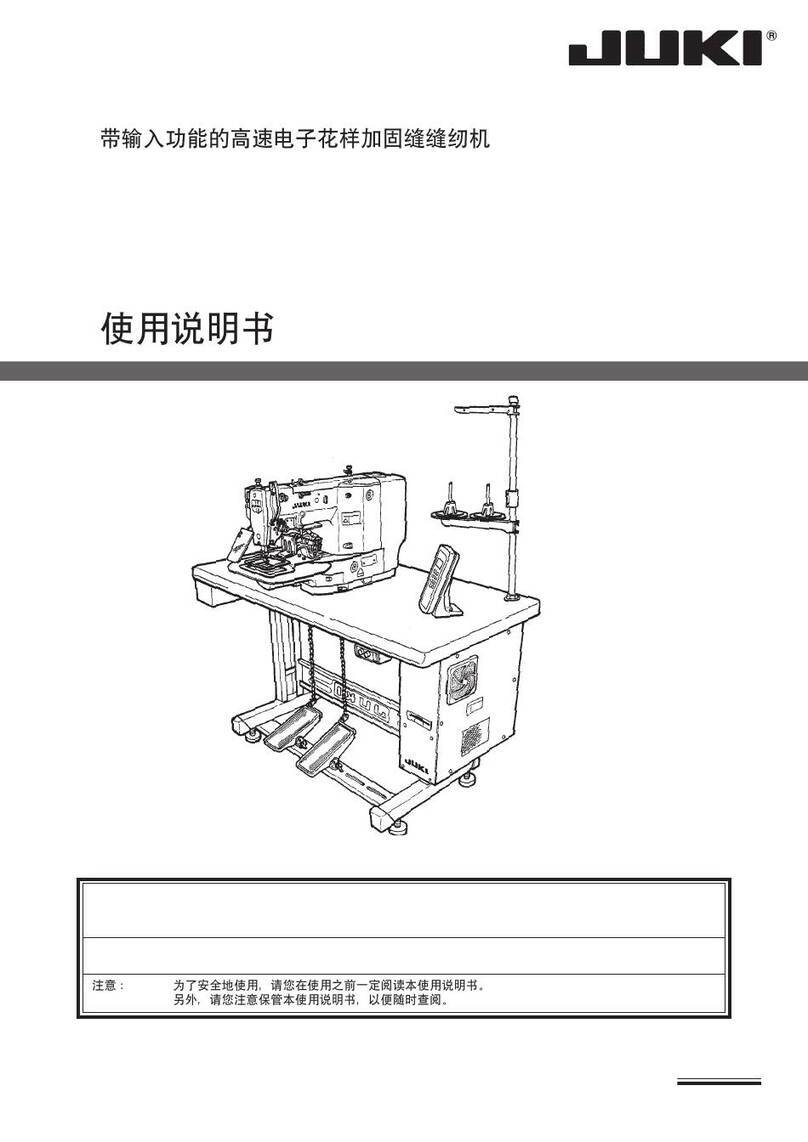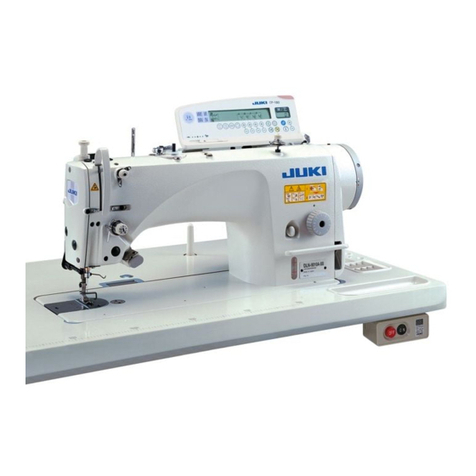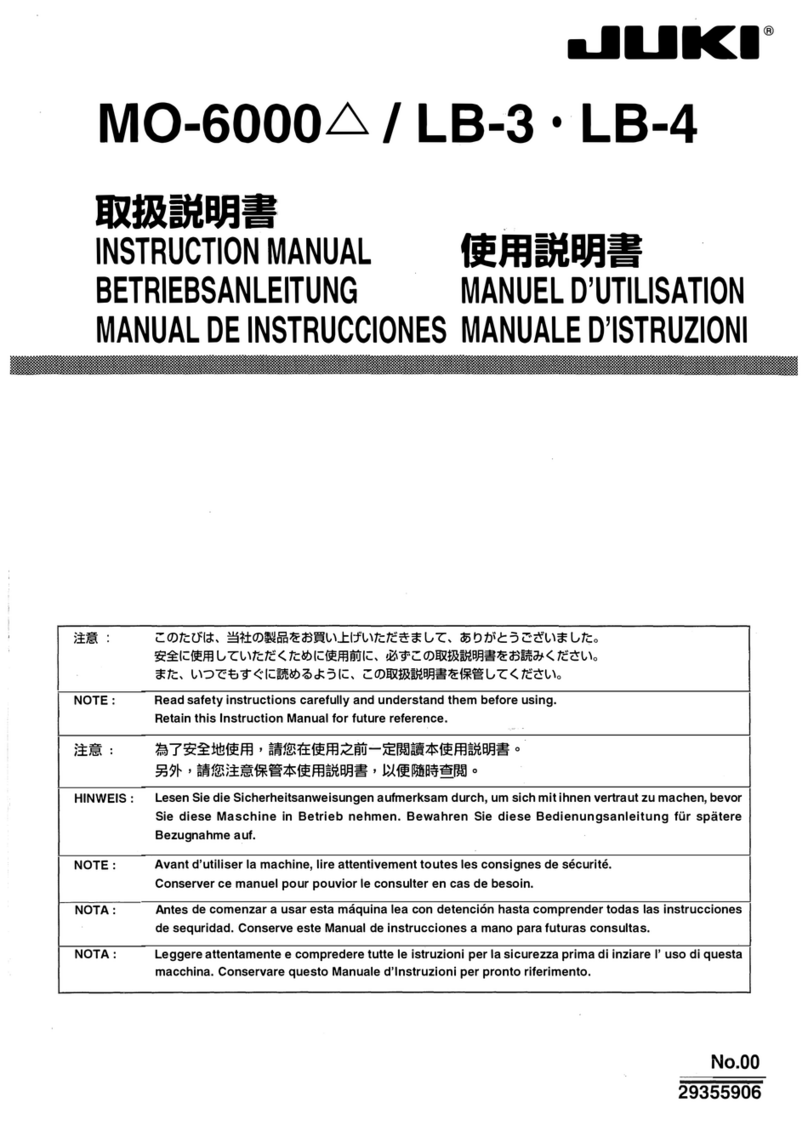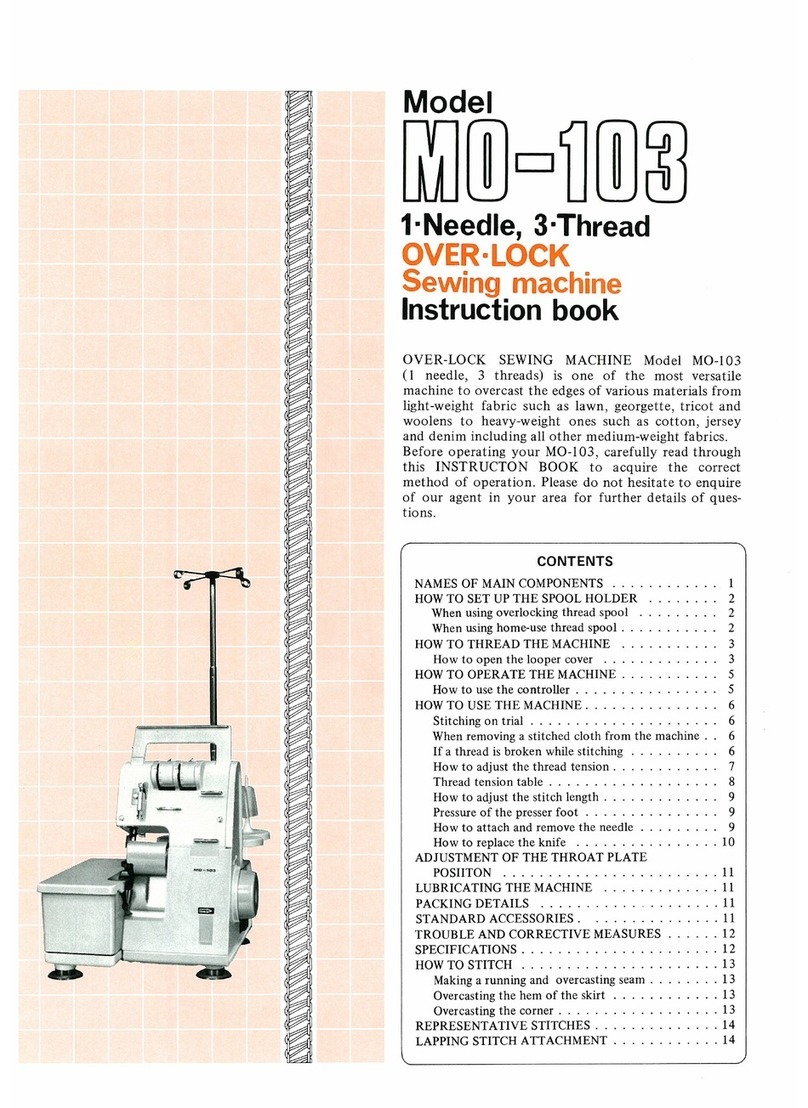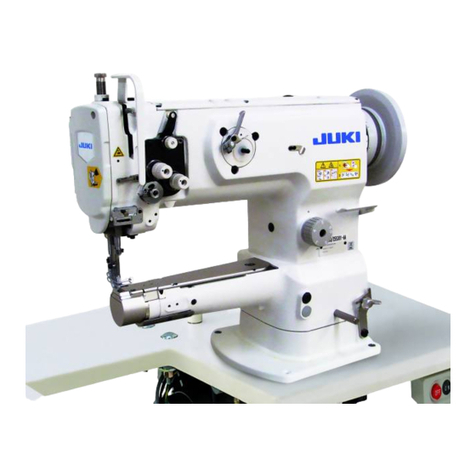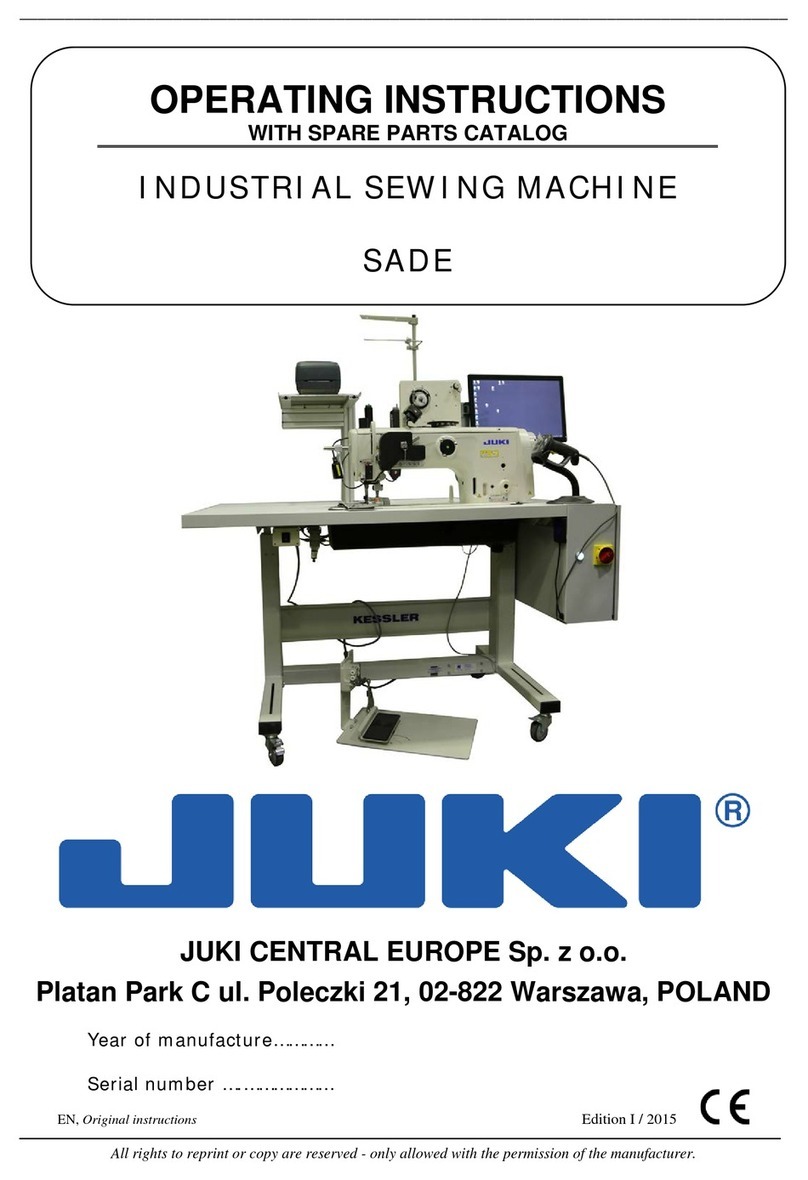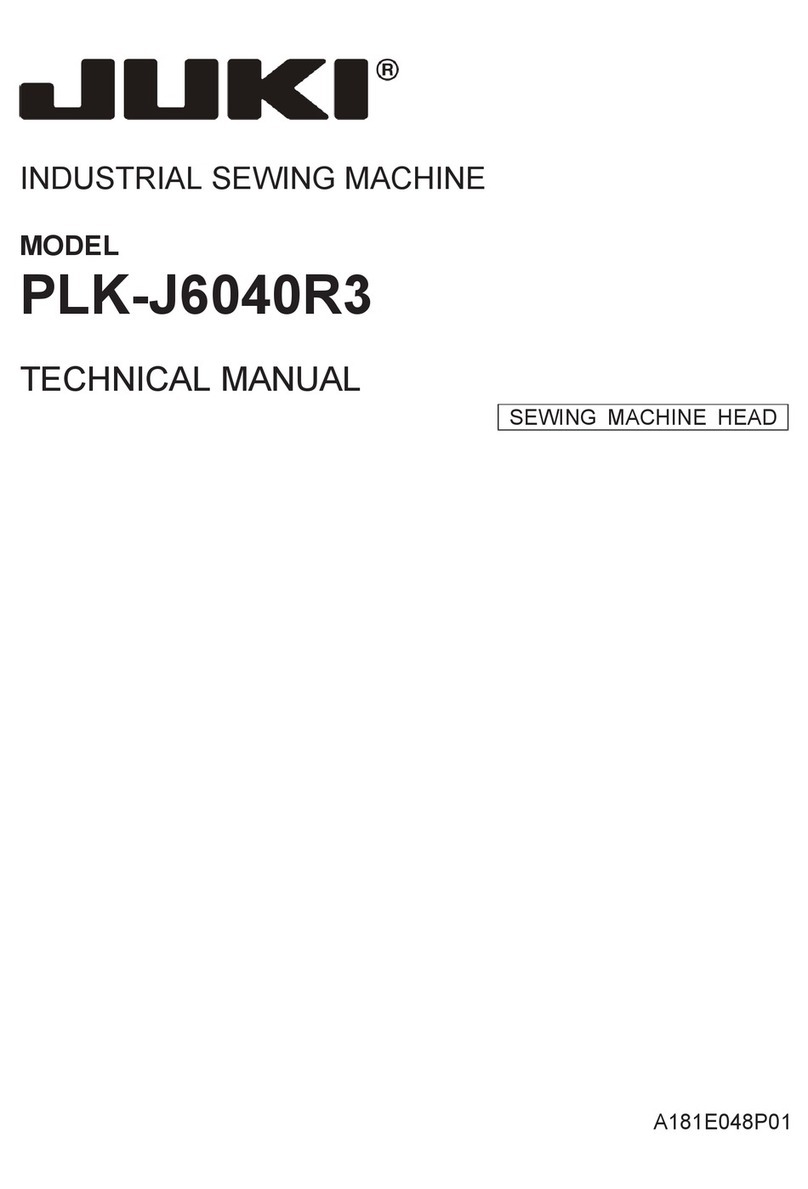i
CONTENTS
1. SPECIFICATIONS ........................................................................................................... 1
2. PREPARATION OF THE SEWING MACHINE ................................................................ 1
2-1. Installation ..........................................................................................................................................1
2-2. Lubrication.......................................................................................................................................... 2
2-3. Attaching the needle..........................................................................................................................2
2-4. Attaching the needle bar cover.........................................................................................................3
2-5. Attaching the button tray assembly .................................................................................................3
2-6. Threading the machine...................................................................................................................... 3
3. ADJUSTMENT OF THE SAWING MACHINE ................................................................. 4
3-1.
Thread tension adjustment........................................................................................................................ 4
3-2.
Adjustment of the thread pull-off lever .................................................................................................... 4
3-3. Adjusting the tension lever ............................................................................................................... 4
3-4. Adjusting the nipper ..........................................................................................................................5
3-5. Adjusting the thread tension guide on the face plate..................................................................... 5
3-6.
Needle-to-looper relation .................................................................................................................................... 5
3-7. Position of the needle guide ............................................................................................................. 6
3-8. Height of the button clamp................................................................................................................ 6
3-9. Work pressing force .......................................................................................................................... 6
3-10.
Adjustment of the button clamp stop lever.....................................................................................6
3-11. Timing of thread tension release ....................................................................................................7
3-12. Setting for 2- or 4-hole buttons....................................................................................................... 7
3-13. Setting a number of stitches........................................................................................................... 8
3-14. Adjusting the position of the stop-motion.....................................................................................8
3-15. Automatic thread trimmer ...............................................................................................................9
(1) Adjusting the position of the moving knife......................................................................................9
3-16. Clearance between the button clamp lifting lever and the adjusting screw .............................. 9
3-17. How to set the L-shaped lifting rod ................................................................................................9
3-18. Knot-tying mechanisms ................................................................................................................10
(1) Adjusting the knot-tying connecting plate.....................................................................................10
(2) Adjusting the knot-tying arm stopper............................................................................................10
(3) Adjusting the knot-tying notch ......................................................................................................10
(4) Changeover of with/without knot-tying ......................................................................................... 11
4. MAINTENANCE, SUBCLASS MODELS AND ATTACHMENTS .................................. 11
4-1. How to connect the metal ttings of the belt ................................................................................ 11
4-2. Subclass models ............................................................................................................................. 11
4-3. Attachments......................................................................................................................................12
(1) Attachments for shank buttons (Pearl buttons) (Z033) ................................................................13
(2) Attachment for the rst process of wrapped-around buttons (Z041)............................................13
(3) Attachment for the second process of wrapped-around buttons (Z035) ...................................... 14
(4) Attachment for snaps (Z037)........................................................................................................14
(5) Attachment for metal buttons (Z038)............................................................................................15
4-4. Motor pulley and belt .......................................................................................................................15
5. TROUBLES AND CORRECTIVE MEASURES ............................................................. 16
